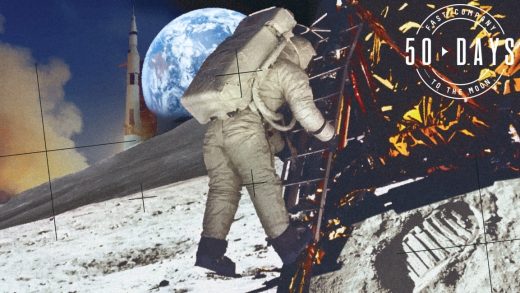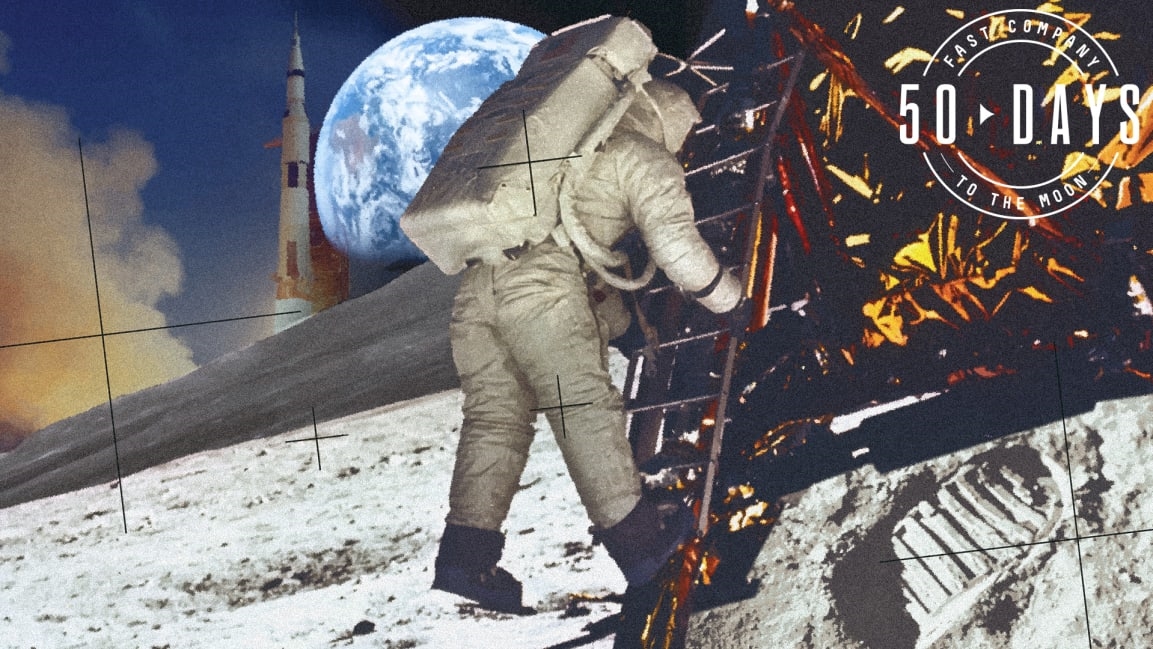How going to the Moon really did change the world—back on Earth
This is the 50th in an exclusive series of 50 articles exploring the 50th anniversary of the first-ever Moon landing. You can check out all the 50 Days to the Moon stories here.
Just before the launch of the last mission to the Moon, Apollo 17 in December 1972, the New York Times asked several dozen philosophers, scientists, writers, and political leaders to reflect on what the Moon missions had meant to humanity and the world. The responses ranged from the anodyne and predictable to the idiosyncratic. By Apollo 17, there had been plenty of criticism of the Moon flights. What, exactly, was the point?
One of those interviewed was Jacob Bronowski, a British scientist, mathematician, and historian of science. He was also the writer and narrator of the legendary BBC TV series The Ascent of Man. In that series, Bronowski traveled the world to trace the development of human society through its understanding of science.
Of the Moon missions, Bronowski said, “I am not at all impressed with people who tell me it is useless. It is only useless if we do not know how to use the experience.”
Going to the Moon was the hardest, most demanding enterprise human beings had ever taken on. It is surely the most dramatic technical and engineering achievement ever, one of the great undertakings in all of human history.
The race to the Moon was a success. Even Apollo 13, which looked like a disaster, was turned into a triumph by the ingenuity and determination of the people on the ground, and the three astronauts in their crippled spaceship.
Bronowski is absolutely right: If you can look at one of the greatest achievements in human history and shrug—consider it useless, a waste of money, or a distraction from other things—that doesn’t say anything about the achievement itself. That’s just a failure of understanding, or imagination.
Landing on the Moon was the opposite of useless.
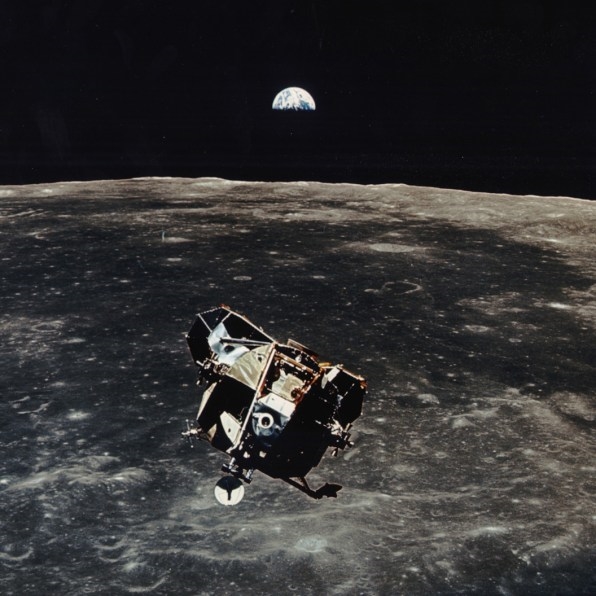
But what’s so clear as we celebrate the 50th anniversary of the Moon landings is that we don’t actually understand what we got out of going to the Moon.
We’ve lost track of it, if we ever knew.
As a result, we completely misunderstand Apollo.
We regard the leap to the Moon as a kind of brilliant, one-off performance, without much impact back on Earth, or much resonance for how we live now.
There is no better moment, with the whole world briefly pausing to think about flying to the Moon, to fix that misunderstanding—or at least, to have a conversation that starts to fix it.
In 1961, the United States was a technologically naive country. When President Kennedy said in May 1961 that America should go to the Moon by the end of the decade, not only was the task impossible—we had none of the tools we’d need to do the job—but at that moment, more than half the country had never even been in an airplane. Kennedy was asking Americans to fly to the Moon and most of us had never been airborne before.
Privately, before Kennedy announced the goal, NASA told him the odds of making it to the Moon and back, safely, by the end of the decade were just 50/50.
For both Kennedy and America, then, going to the Moon was a leap of faith. But part of leadership is what Kennedy knew: By simply announcing the mission—and rallying Americans to that cause—he would change the odds dramatically in favor of success.
In May 1961, it was impossible. In July 1969, Neil Armstrong and Buzz Aldrin were bouncing around exuberantly on the Moon. Two years after that, we had shipped an electric car to the Moon, and Dave Scott and Jim Irwin were zooming around and laughing at their own antics.
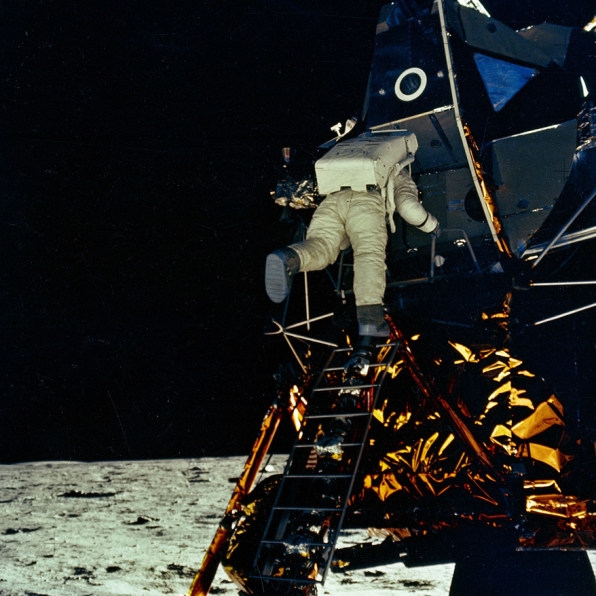
So what did we get from going to the Moon?
At the most basic level, going to the Moon transformed our understanding of how both the Moon and the Earth were formed and of the dynamics of the solar system. We didn’t go to the Moon, gather some rocks, bring them home, and pretty much confirm what we already knew. The exploration of the Moon—the rocks and lunar dirt the astronauts brought back, and the scientific experiments we performed on them back on Earth—upended our understanding of how the Moon and the Earth were created and how they interacted.
Going to the Moon inspired a whole generation—maybe two generations—of young people to become scientists, engineers, and computer programmers. In the decades after the Moon missions, we had a blossoming of the digital revolution that transformed life on Earth in every conceivable way. American companies dominated that revolution, and that transformation. We had the talent and creativity, and we started the companies that drove the revolution forward. That’s no accident.
In the course of the race to the Moon, we did something else that is very obvious that we often overlook: We learned to fly in space, which turned out to be damned hard. We taught ourselves, and then because the United States is an open society, we showed the world. If you want to know how America solved the problems of Apollo, you can look it up: Every report, every document, and every video is available with a few clicks—no charge. We figured out how to fly in space, we meticulously documented that experience, and then we let anyone learn who wanted to do it, too.
The space race started as a Cold War challenge, with President Kennedy determined to make sure that the United States was no longer losing in space. But over the course of eight years, Apollo transformed into something much larger. The mission itself became both the goal and the inspiration—for those working on it and for everyone else around the world as well. America landed on the Moon without conquering it or capturing it. We went to the Moon, and because of the way we did it, the world came along with us. Even today, 50 years later, people around the world don’t say, “the United States went to the Moon,” they say, “we went to the Moon.” They include themselves, no matter where they live, no matter when they were born.
That’s an extraordinary measure of the power of the mission itself, and also of its value.
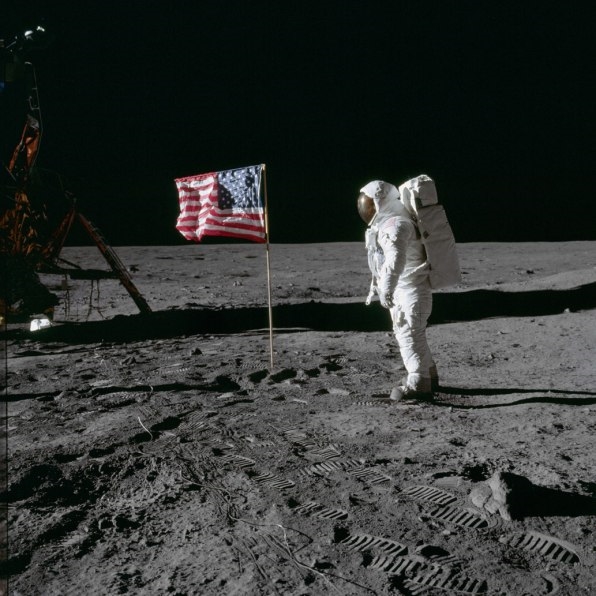
One of the great myths of Apollo is that it was expensive
The 50th anniversary of Apollo 11 is a great moment to puncture the myth, once and for all, that going to the Moon was expensive.
Apollo cost $19.4 billion, if you simply add up the actual spending in the years the money was spent, from 1961 to 1972. (The oft-cited figure for Apollo’s cost is $25.4 billion, which is all the spending adjusted to 1974 dollars.)
In the 1960s and 1970s, there is no question that $19.4 billion was a fair amount of money.
But here’s an instructive comparison: There are two years of the Vietnam War that each cost more than $19.4 billion.
Apollo lasted from 1961 to 1972. In round figures, it cost $20 billion. During that same period, Americans spent $40 billion buying cigarettes.
Was going to the Moon expensive? Sure.
Could we afford it? Absolutely. If we could pay for Vietnam—which did such devastating damage—we could certainly afford to go to the Moon.
If we could buy all those packs of Marlboros, we could afford to go to the Moon.
And we got our money’s worth: We went to the Moon. Apollo was a government program that came in on time, on budget, almost completely scandal-free, and it was a success.
Whether it was the right use of money is another question.
But here’s the amazing thing, an important answer to the critics who say we should have been spending that money on poverty, education, and a better society right here on Earth.
We did that, too, in the 1960s.
Black voter registration and participation soared in the 1960s, more than doubling just between the presidential elections of 1960 and 1964.
Poverty across the U.S. was cut by 40%. Poverty among senior citizens was cut by 50%. Median income, in constant dollars, rose by 40%.
University enrollment in the 1960s doubled. University enrollment for women went up 145%.
Congress passed not only the Civil Rights Act (1964), the Voting Rights Act (1965), and the Great Society programs, but also the Clean Air Act (1963) and the Clean Water Act (1972). As a result, the air and water everywhere in the U.S. are cleaner today than they were 50 years ago.
The big problems that Americans had on January 20, 1961, when President Kennedy took office—every one of those problems had improved when the last Apollo astronauts returned from the Moon in December 1972. In many cases, dramatically.
If we can land a man on the Moon, we should be able to address our hardest problems right here on Earth. And we did. The very same people did, in the very same decade.
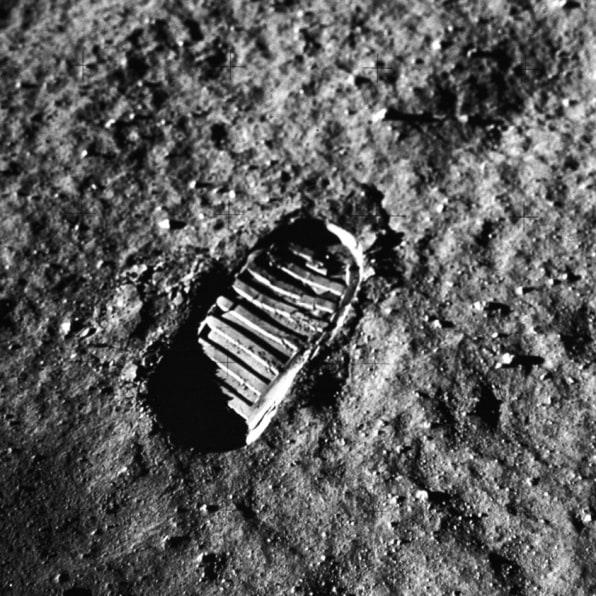
Apollo sometimes carries a little tang of disappointment, because it didn’t set the stage for the space age, as we might have imagined watching The Jetsons and Star Trek in the 1960s.
But going to the Moon did something far more important back on Earth: It laid the foundation for the digital age.
That’s something that—remarkably—Apollo gets almost no credit for.
When President Kennedy gave his go-to-the-Moon speech in May 1961, a small computer was the size of three or four refrigerators, lined up next to each other. You brought your work to the computer; you didn’t take the computer itself anywhere.
The astronauts needed a sophisticated real-time computer to fly to the Moon. They couldn’t get there without one. But that computer had to be portable, and they couldn’t take even one refrigerator to the Moon.
The computer development that got done for Apollo—mostly by the Massachusetts Institute of Technology—turned out to be dramatic and pioneering. The Apollo flight computer, which the astronauts used to fly to the Moon in both the command module and the lunar module, was the smallest, fastest, most nimble (and also most usable) computer that had ever been created.
In the process of creating it, MIT and NASA revolutionized the computer industry, deep inside the early days of the semiconductor companies that would themselves go on to revolutionize the world. At the moment of the birth of the modern computing industry, NASA was the only major customer for computer chips, and it was also an unrelentingly demanding customer, insisting on reliability beyond anything those early companies, in what would become Silicon Valley, had been capable of before.
Because of the work that MIT and NASA did during the development of the Apollo computer, going to the Moon helped drive down the price of computer chips from $1,000 each to $1.58 each, even as they got faster and more powerful. NASA wasn’t just there at the birth of Moore’s Law, it helped inspire it.
Apollo also changed our attitude about technology and computers. We started the ’60s with dial telephones and console radios. Then we spent a decade watching people on TV using cutting-edge technology—the computers, but also the spaceships, the spacesuits, and the communications all the way to the Moon and back—and we came away with a whole fresh sense that technology was actually useful in real life, not just in war; and that technology could be trustworthy.
We didn’t take that first small, powerful, portable, real-time computer and do something pedestrian and invisible with it, like operate a chemical factory or analyze advertising data or run the elevators in a skyscraper. We took that computer and did the hardest thing we could imagine: We used it to fly people to the Moon.
So if the astronauts could put their lives in the hands of computer chips, we could trust computers to do all kinds of things.
The decade of the ’60s, in many ways, created the country that we think of as America today—in civil rights, in relations between the sexes, in politics and business and music, and as much as anything, in technology. We owe the timing and intensity of that to the race to the Moon.
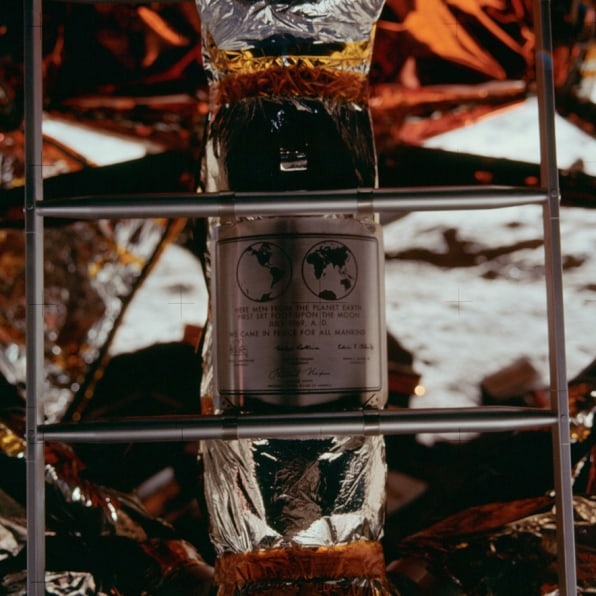
Seeing ourselves in the Moon
We love space.
The Smithsonian Air & Space Museum has a position of prominence on the Mall in Washington, D.C., and it has a second, even bigger set of buildings out by Dulles International Airport. (The Dulles facility is so large you could put the original Air and Space Museum inside it.)
Between those two locations, the Air and Space Museum is the most-visited museum anywhere in the world, with 24,000 visitors a day, 364 days a year, more even than the Louvre with its 8 million visitors a year.
We visit for all kinds of reasons: Spaceflight hardware is, quite simply, cool and amazing. But one reason we visit is to step out of our daily lives for a few moments and connect with the spirit of adventure and daring that flying in space requires. Apollo spacesuits and Gemini capsules look accessible; you can easily imagine yourself in them. That’s where a sense of wistfulness about Apollo comes from, in part.
What has become of the America that planted a flag on the Moon? We used to do things like that: big, ambitious, impossible. Why don’t we anymore?
That spirit of America is just fine. It’s alive and well. In the halo after Apollo, it created Microsoft and Intel, Apple and Google. Have you noticed that all of human knowledge is accessible from a device that fits in your hand? Did not creating that world—the world we have so quickly come to take for granted—require spirit and determination, vision and daring? Of course it did. It didn’t always require physical courage, but it required intellectual courage and relentless determination and boldness of imagination.
Americans created the internet. Americans decoded the genome. American spaceships leap the solar system to unlock the mysteries of Mars, Jupiter, Saturn, and all kinds of quirky asteroids and comets and moons.
There’s another reason to shake off the nostalgia: America today is, in many of the biggest ways, a better country than the America of 1969.
When you talk to the people who took America to the Moon, when you read what they said at the time and how they reflect on it decades later, those people will tell you that in working on Apollo, they did something extraordinary—that it was the greatest experience of their lives, whether they were 24 when they worked on it or 54. Those folks never diminish the accomplishment, or the commitment it required.
But they always say two other things: They didn’t do it alone, and they do not consider themselves extraordinary. The task inspired and motivated them and brought out of them work they might not have been able to do in other circumstances.
That is the spirit of America, and it is the essence of the American dream: to imagine something that is out of reach, and then do what’s necessary to make it happen. To prove that it wasn’t out of reach, after all.
Apollo is a heroic story, but there are no superheroes: It was done by ordinary Americans, taking, as Armstrong said, one small step at a time.
That is perhaps the most important legacy of Apollo, one which we appreciate intuitively: It showed us a picture of ourselves. A literal picture of ourselves—those first images of Earth, a shining blue and white planet, floating in the black backdrop of space, an oasis and a beacon.
Apollo also showed us a picture of ourselves in terms of what we could accomplish, as individuals, and when we worked together. The 1960s were the most divisive time in the United States since the Civil War, including the moment we live in now. Yet we accomplished one of the greatest things any civilization ever has, something that required unprecedented teamwork right in the middle of the swirl and the tumult. The race to the Moon is as much a part of the ’60s as the antiwar protests and the Rolling Stones.
There is never a perfect time to tackle big problems. We don’t need to wait.
The idea that going to the Moon was an expensive waste of time is mythology, too. It’s unworthy of the achievement, of the people who made it possible, of the problems they solved.
Apollo shouldn’t make us nostalgic. Just the opposite: It should make us optimistic. It’s a reminder that we love to rise to the occasion. We do know how to make the impossible possible.
Charles Fishman, who has written for Fast Company since its inception, has spent the past four years researching and writing One Giant Leap, his New York Times best-selling book about how it took 400,000 people, 20,000 companies, and one federal government to get 27 people to the Moon. (You can order it here.)
For each of the next 50 days, we’ll be posting a new story from Fishman—one you’ve likely never heard before—about the first effort to get to the Moon that illuminates both the historical effort and the current ones. New posts will appear here daily as well as be distributed via Fast Company’s social media. (Follow along at #50DaysToTheMoon).
(47)

